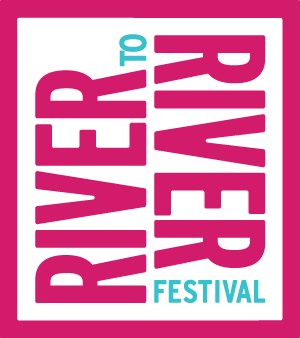ABOUT
As technology users, social media networkers, and urban dwellers, how do we maintain our individuality?
U R QR is a public art and social media project that delves into this question through a participatory process of exploration and experimentation. Conceived by artist duo LoVid—Tali Hinkis and Kyle Lapidus—and presented as part of the 2013 River to River Festival, the project evolves between April and July 2013.
U R QR invites you to take part in each of its multiple phases: an online conversation; an interactive, public event; and an initiative to capture and share the project’s physical and virtual traces.
The ongoing network of online discussions sparks a collective investigation of identity in our digital age and encourages you to contribute your own perspective: What does it mean to express yourself, both on- and off-line? How are your expressions mediated or informed by the presence of a machine? How stable can an identity be in light of the constant state of flux that accompanies the digital? From now through June 2013, LoVid poses these and other queries through social media: follow @URQR_URQR on Twitter and U R QR on Facebook to submit responses and exchange ideas with other participants.
In June 2013, U R QR will translate this conversation from virtual space to physical space through a weekend of engaging events that focus on generating a collective portrait of the participants. As a central component of the activities, LoVid will create photographic portraits of participants’ faces adorned with fragmented black and white code; together, the portraits will combine to create one complete, functional QR code, which both records and reflects the community in attendance. A registration process for these portrait sittings will open on May 4, 2013. Event attendees will additionally have the opportunity to take part in a range of forms of expressive portraiture that will be open to drop-in participation. Through these various acts, individuals will share the experience of displaying their identities, absorbing new ones, or generating hybrid forms through a collaborative, creative process.
At a public event in July 2013, LoVid will unveil the QR code created from the assembled portraits and launch the connected project website. The QR code will link directly to the site, which compiles the records of the online conversations and participatory events. The site’s contents will currently be in flux, acting as an evolving reflection of the fluid processes of identity-making that we consistently pursue through both virtual and physical channels.
For more information and to get involved in the online conversation, connect with @URQR_URQR on Twitter and /URQRURQR on Facebook. Join the action early to shape the project’s cyclical exchange between the virtual and physical, individual and collective, and discrete and hybrid.
PROJECT DATES
- June 22–23: U R QR participatory public event at River to River Festival

- July 7: U R QR public art opening event
COLLABORATORS
- Conceived and Directed by LoVid (Tali Hinkis and Kyle Lapidus)
- Project Manager Alison Burstein
- Designer Andrew Shea
- PRODUCTION ASSISTANT Amy Lokoff
- PRODUCTION INTERN Raymond Mei
- Painters Molly Dilworth and Alfred Steiner
- Photographers Alexis Raskin and Oliver Lyons
- Special thanks Greg Sheppard, Vanessa Haddad,
Santino Lo, Douglas Repetto
CONTACT
- Email LoVid to learn more about this project






